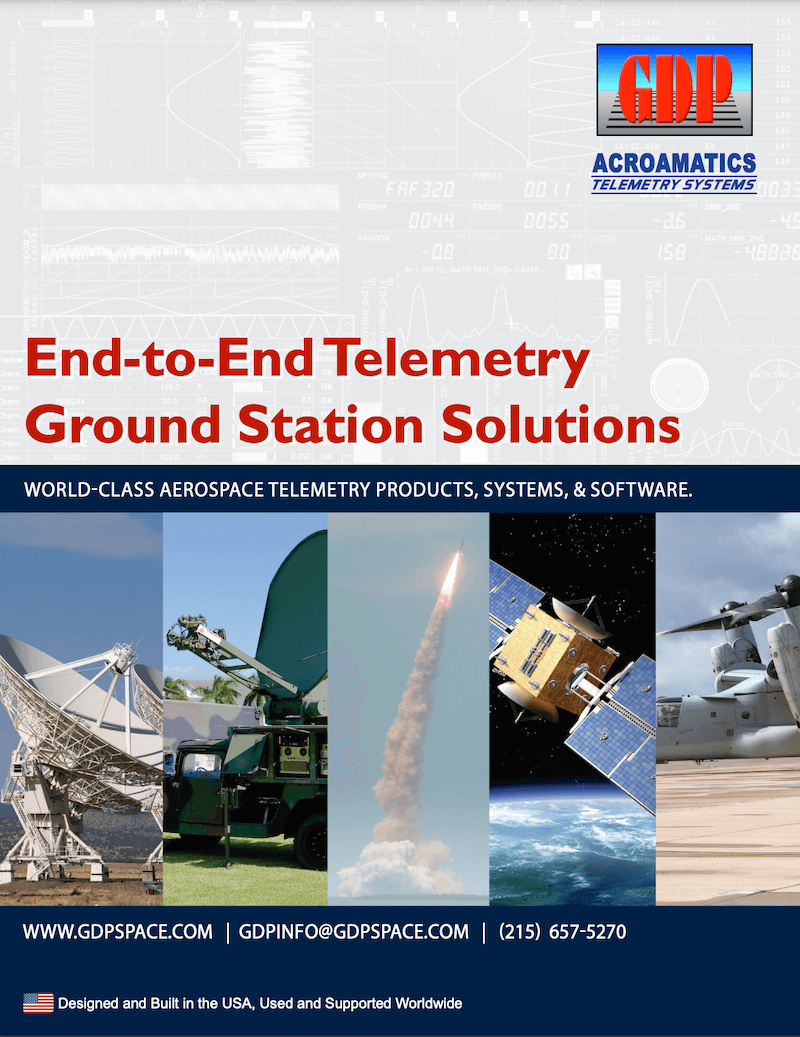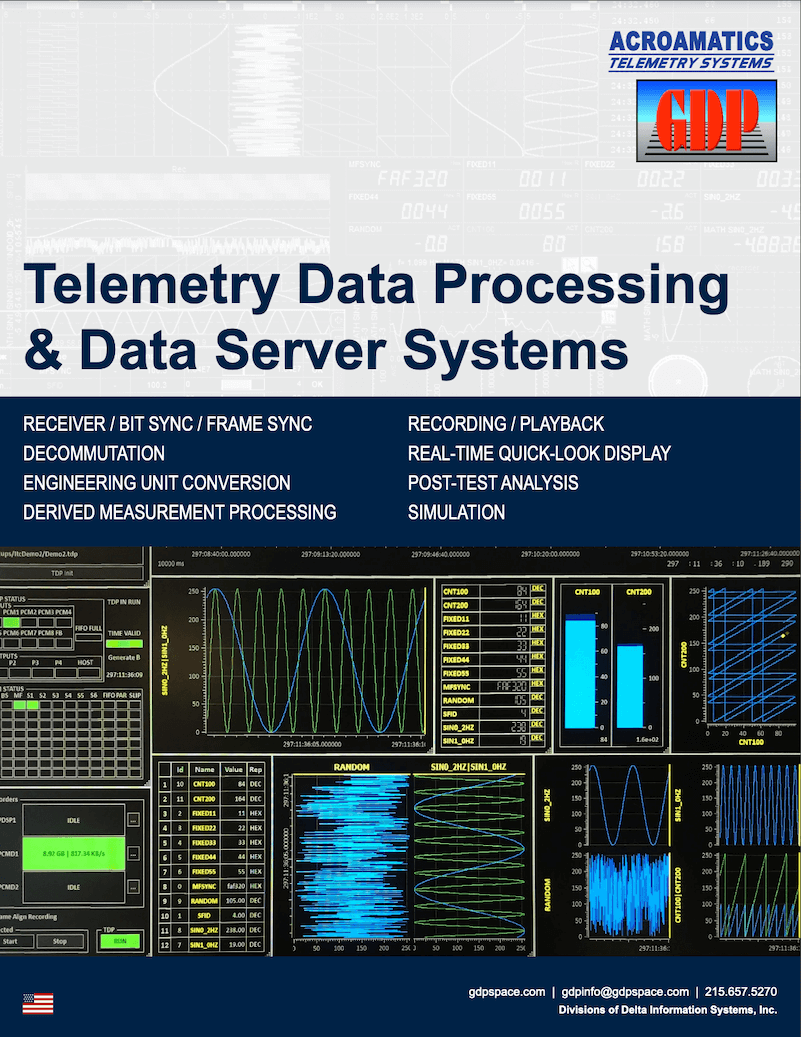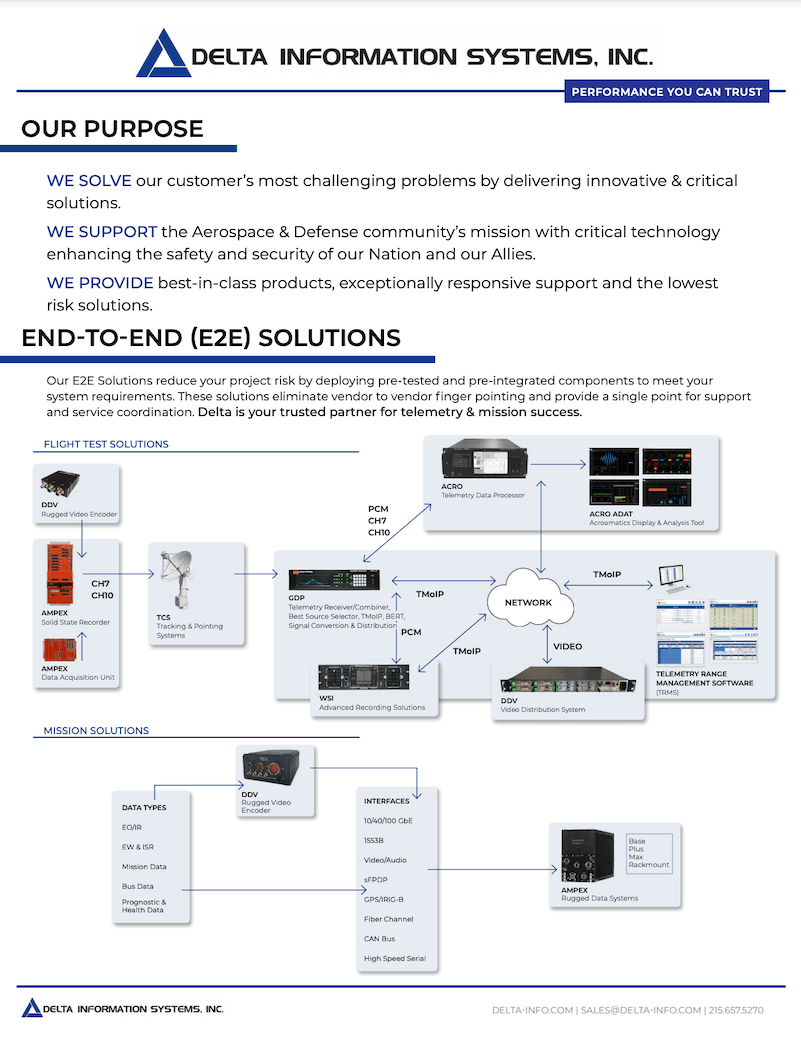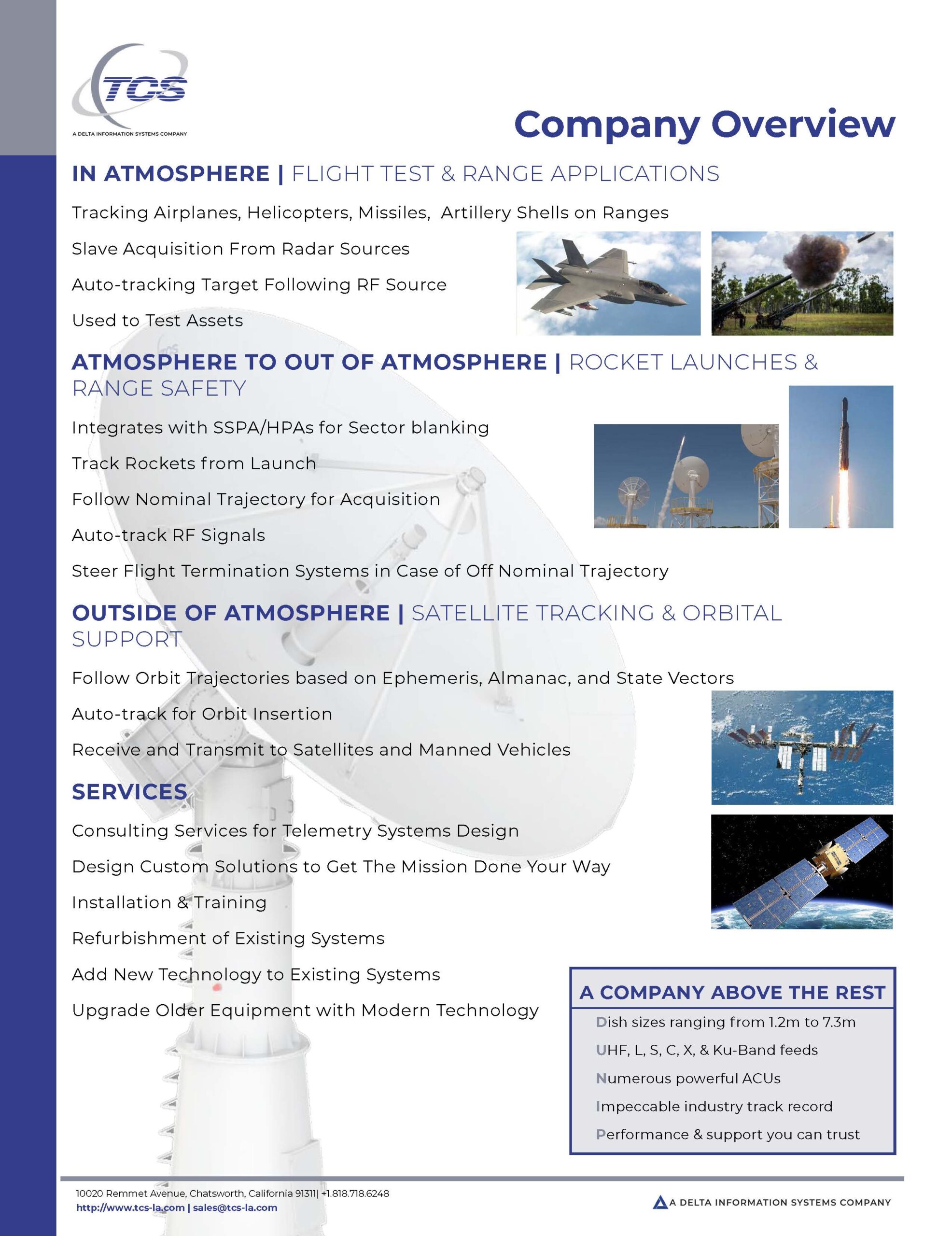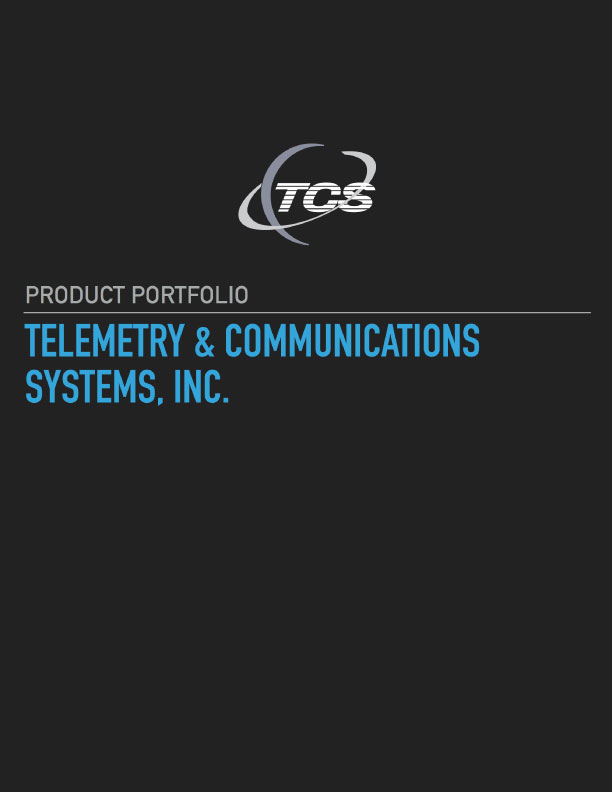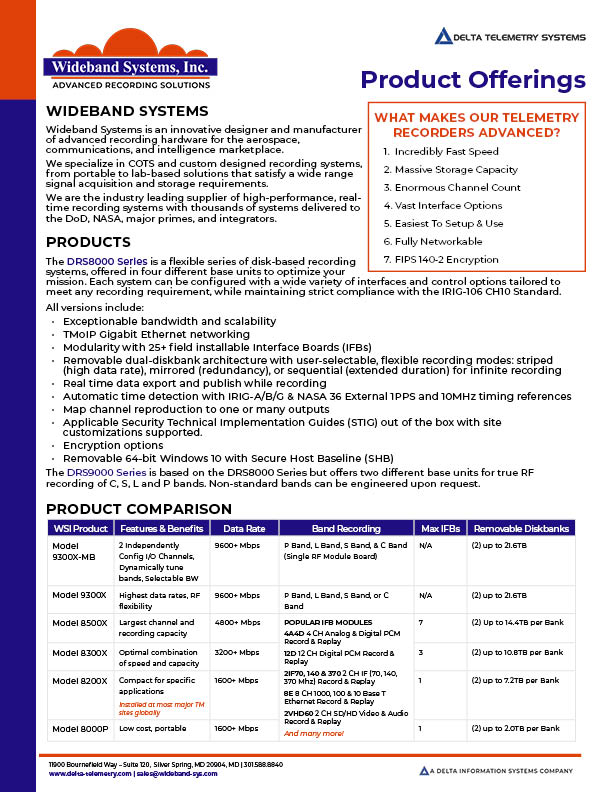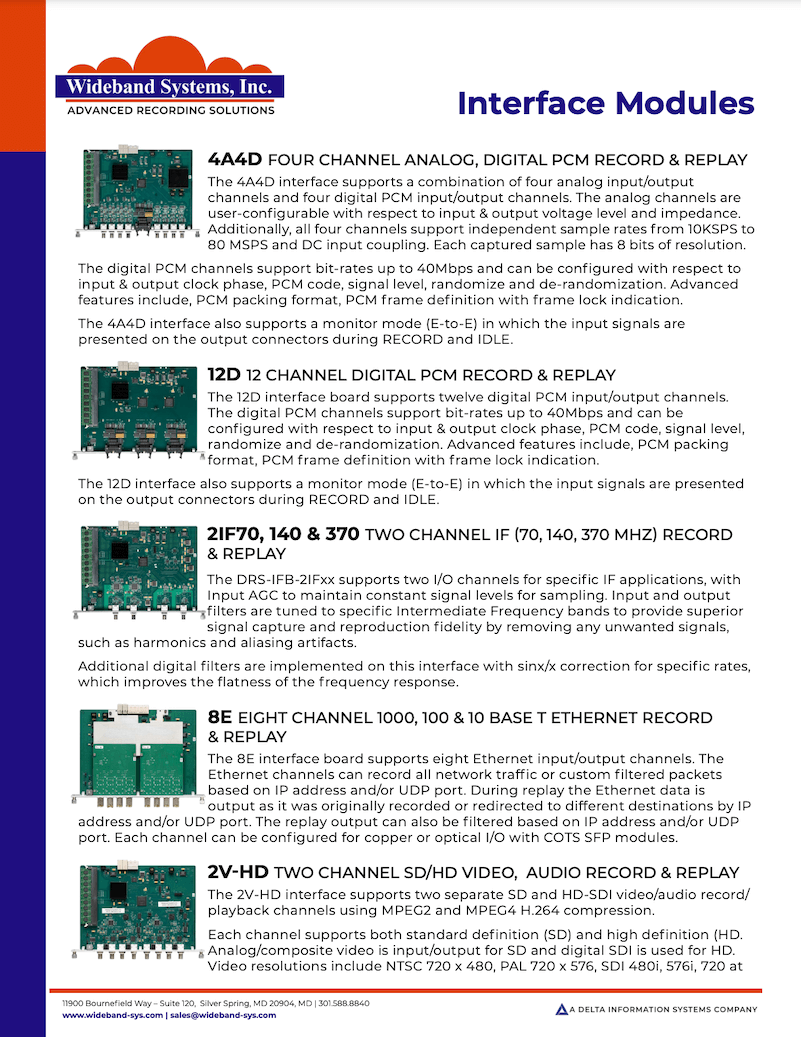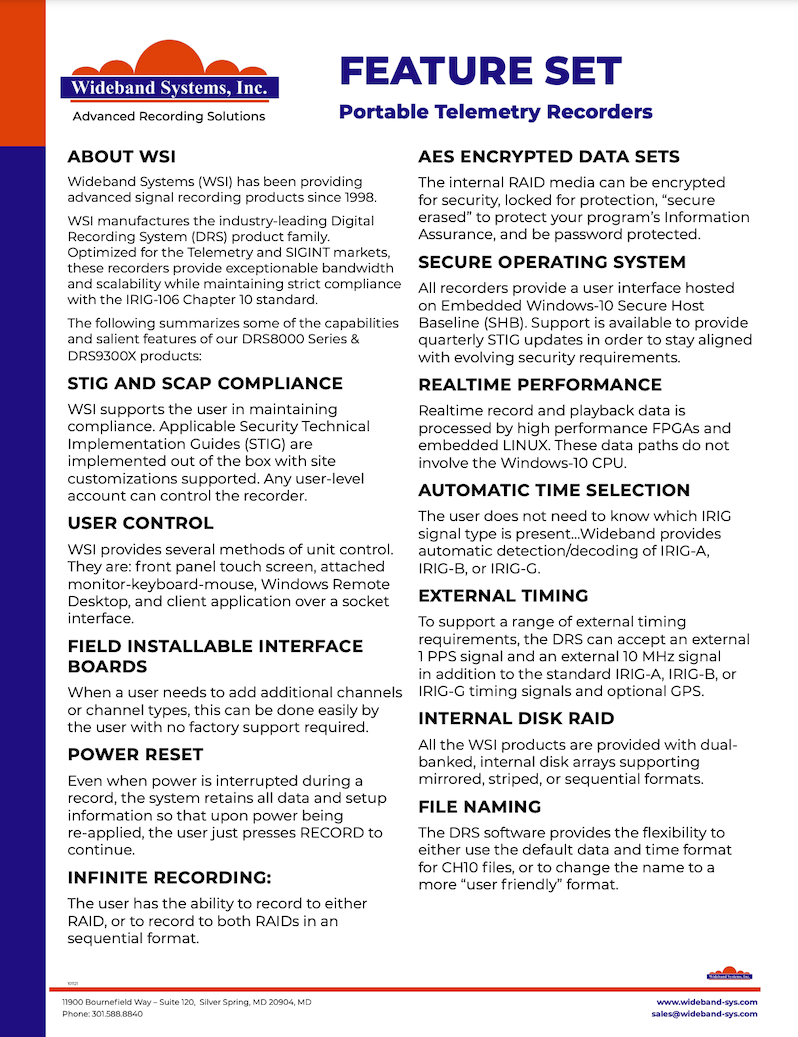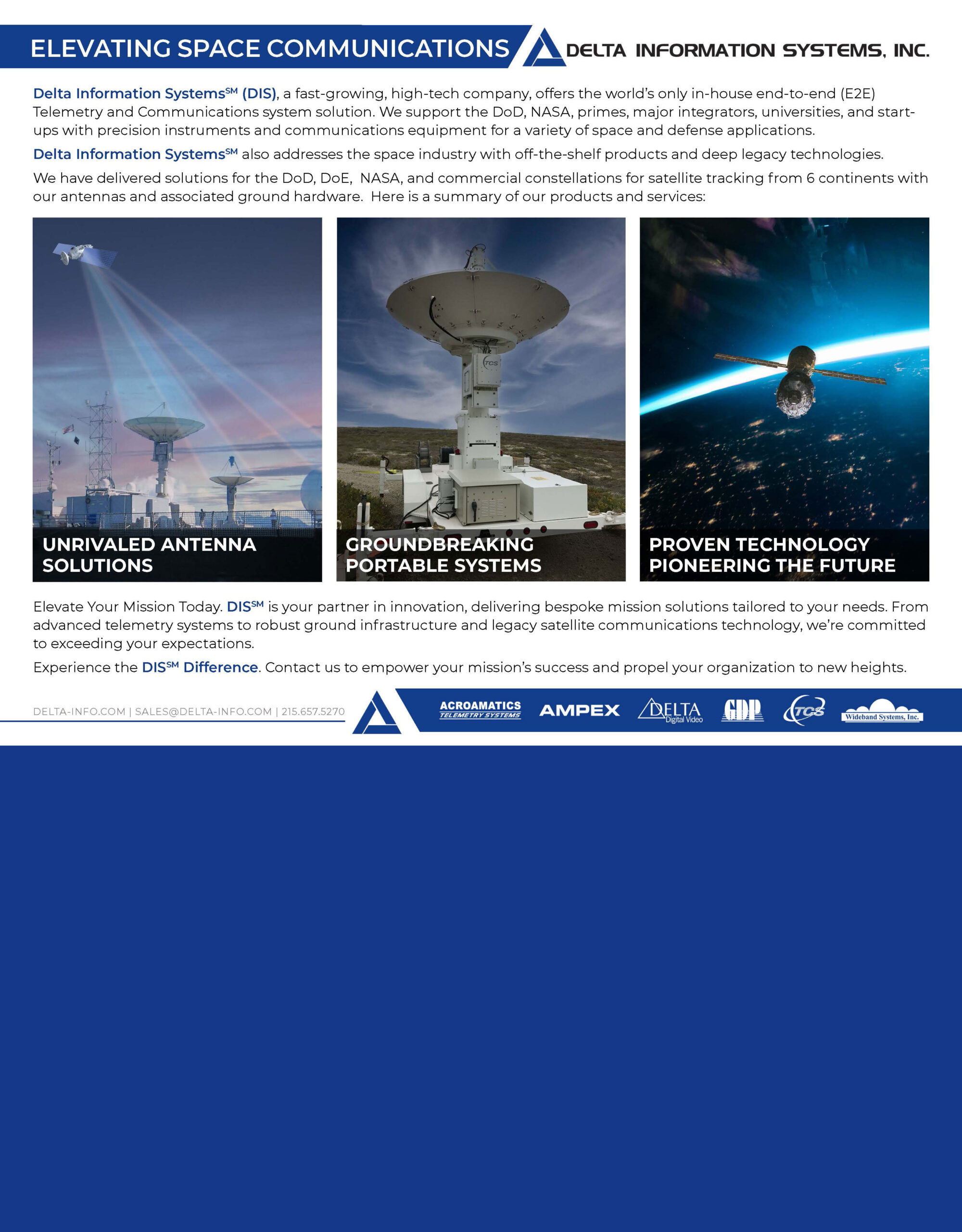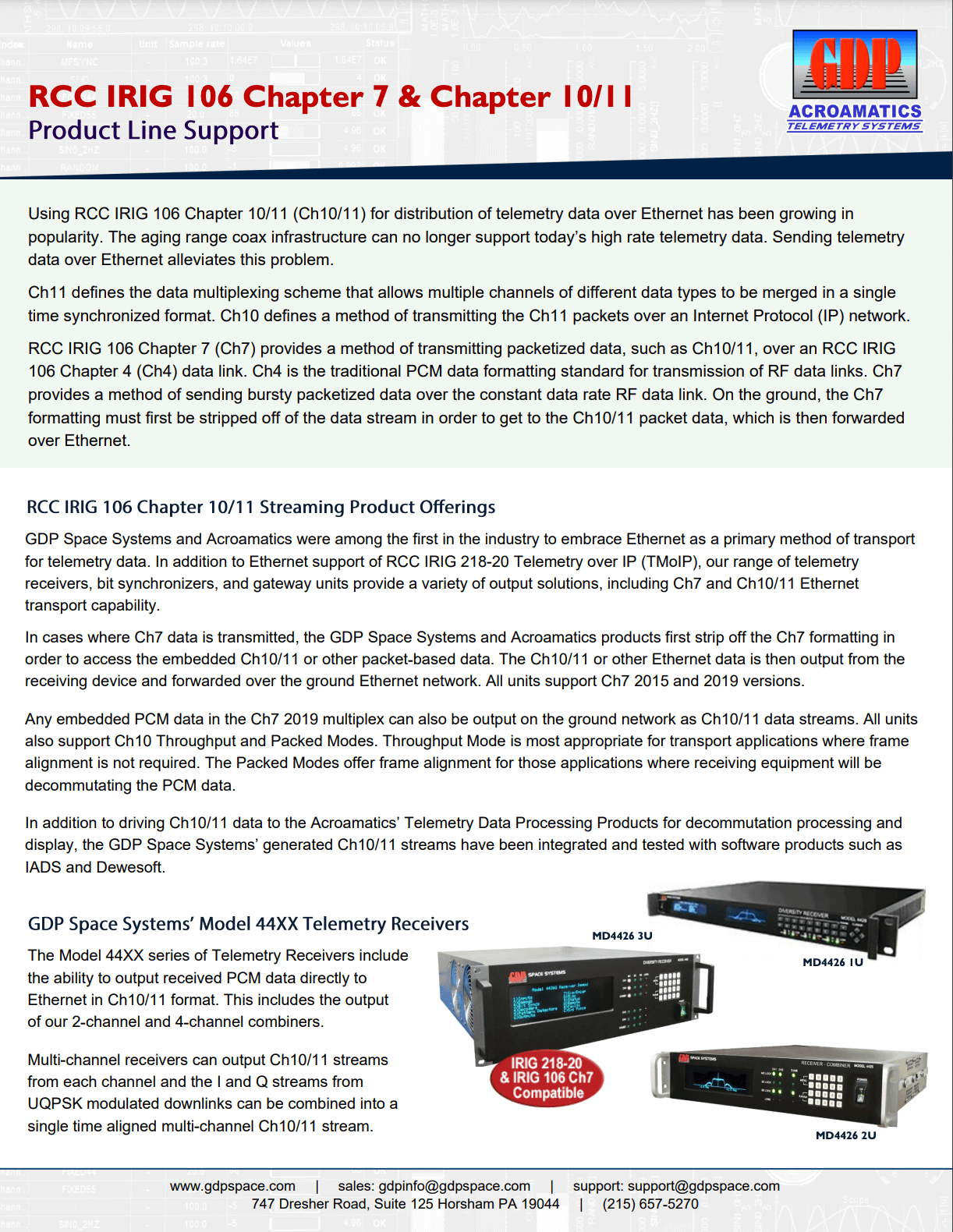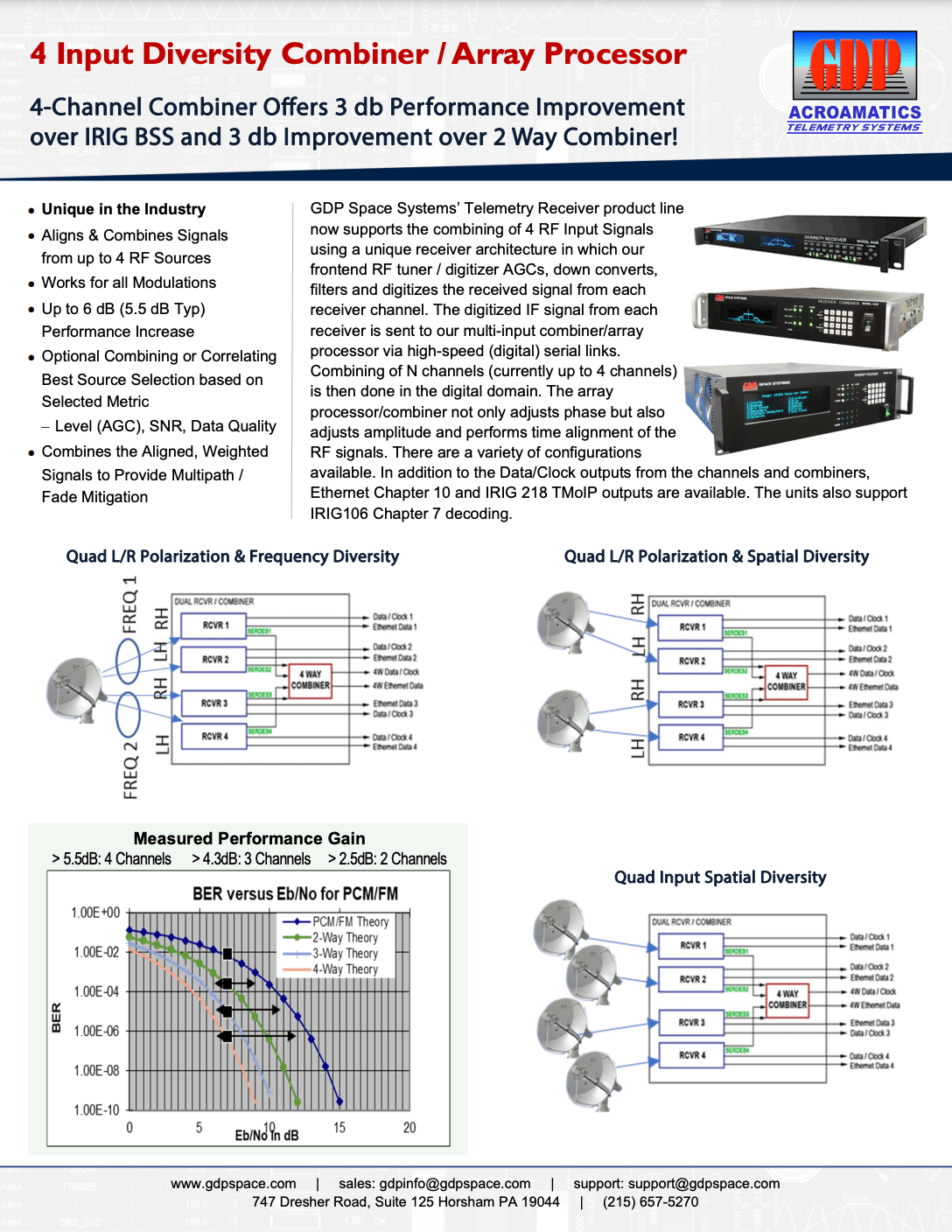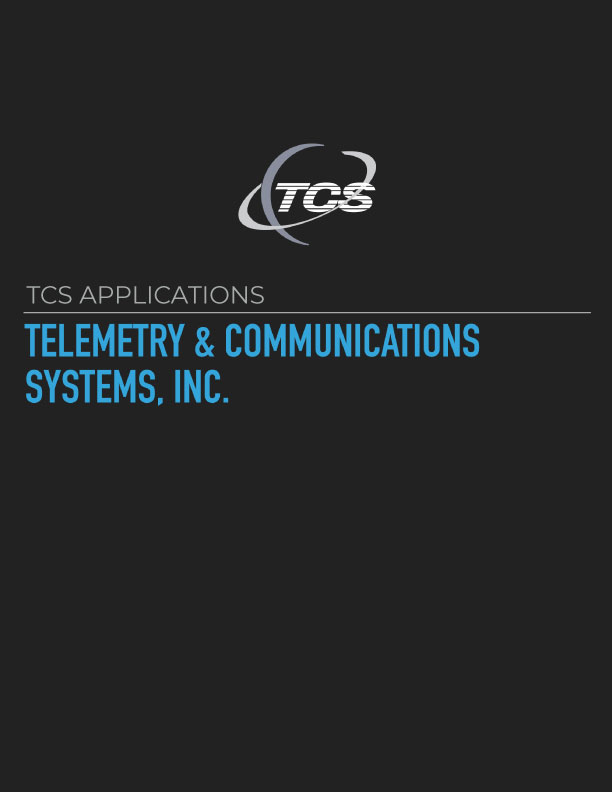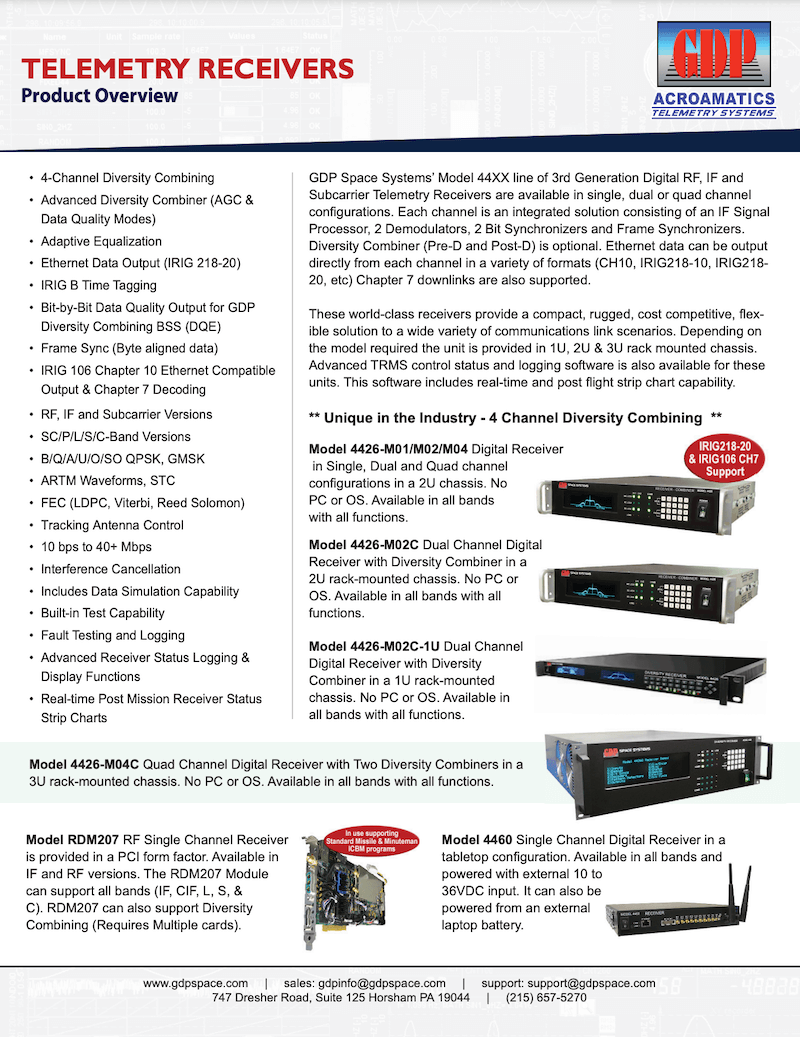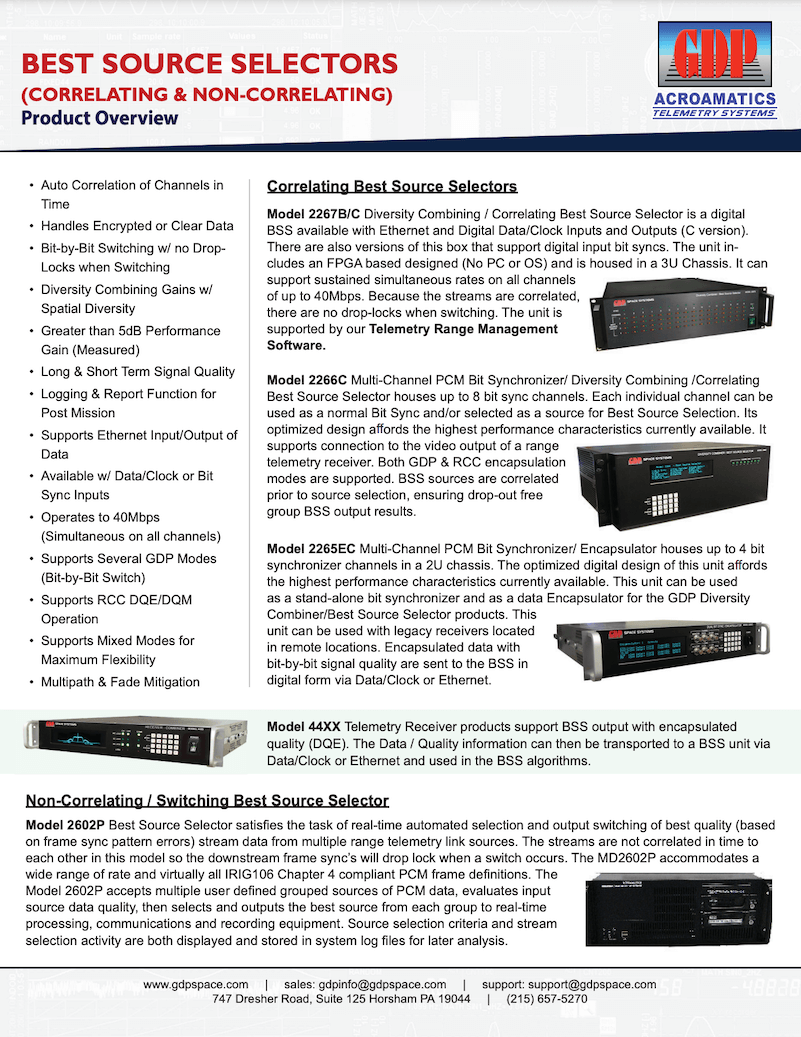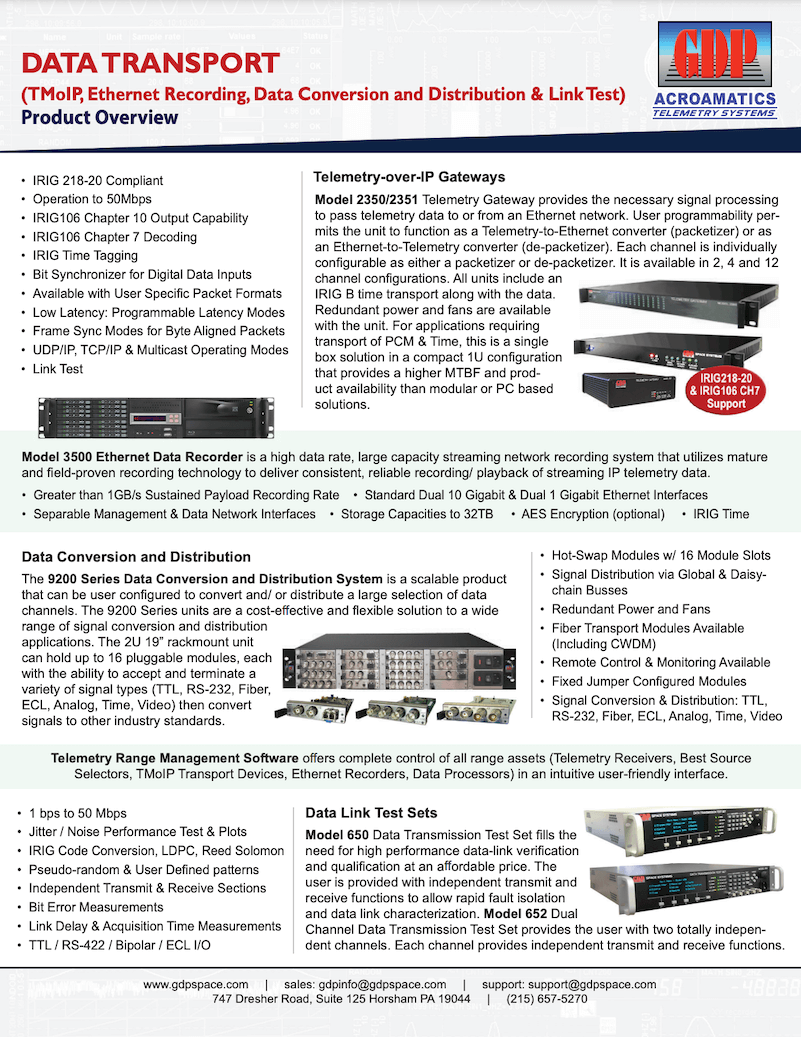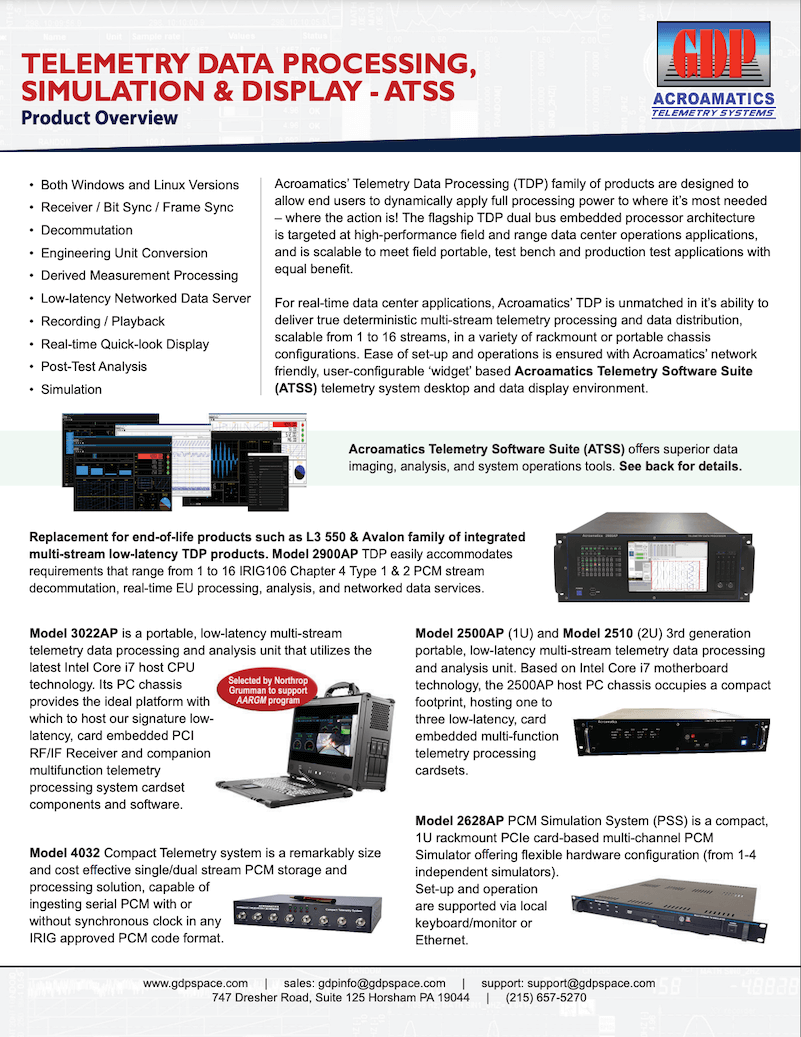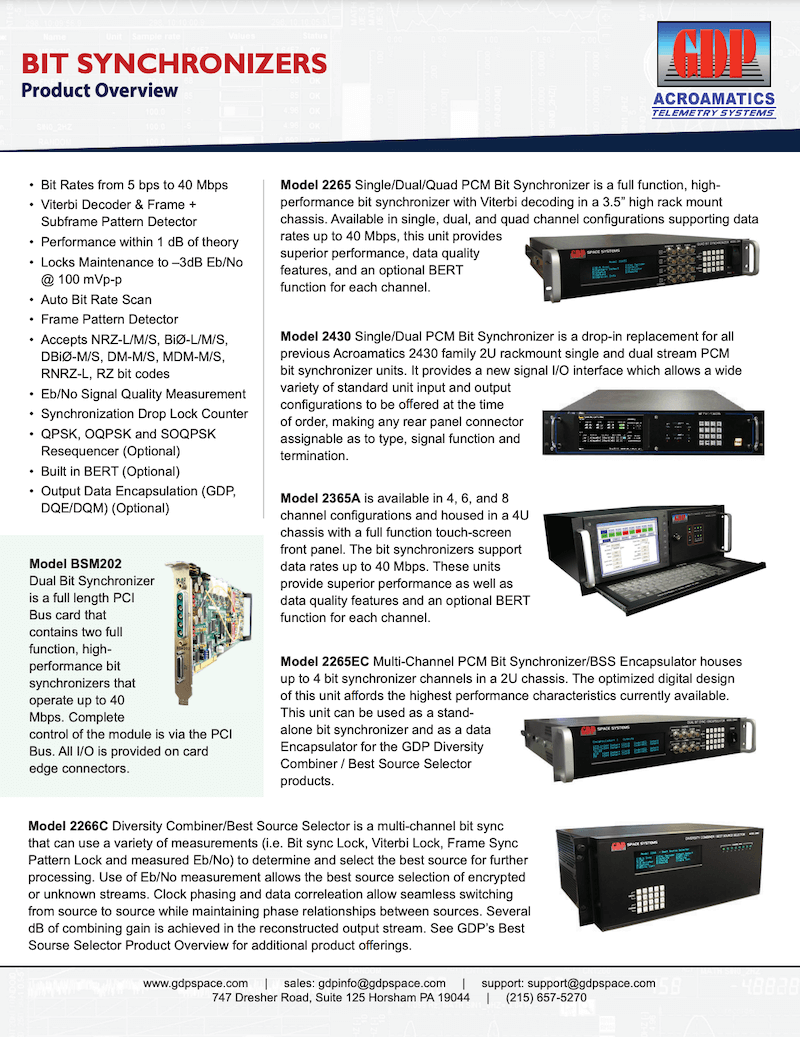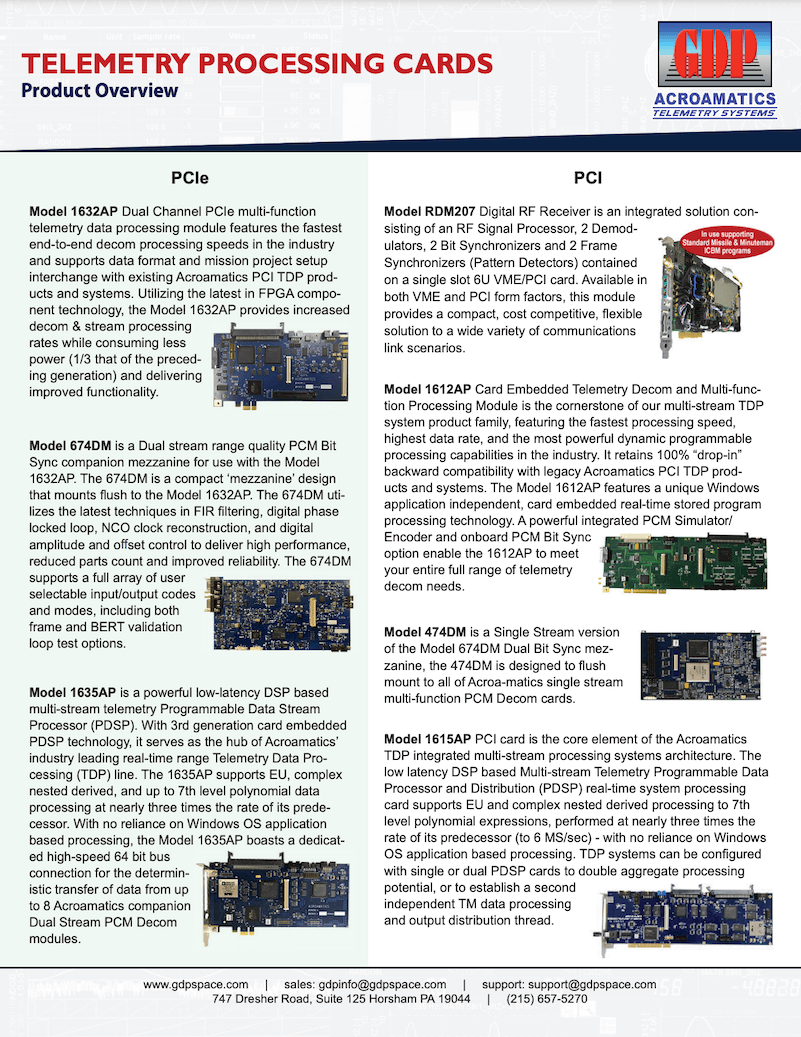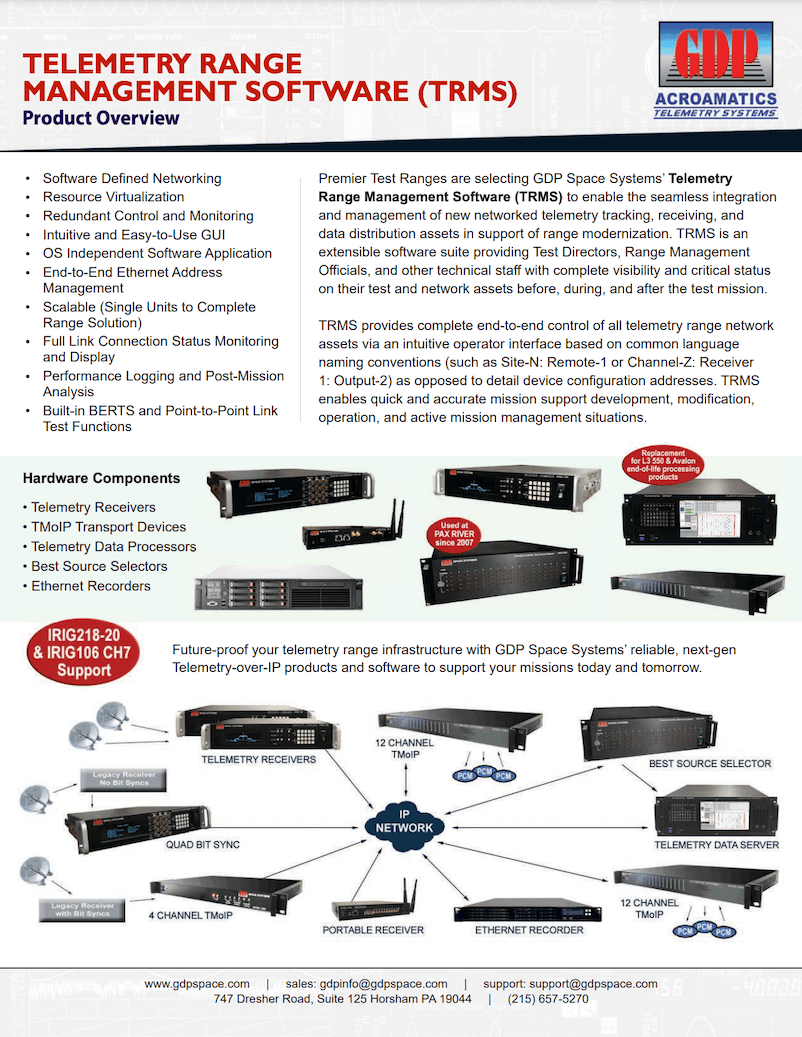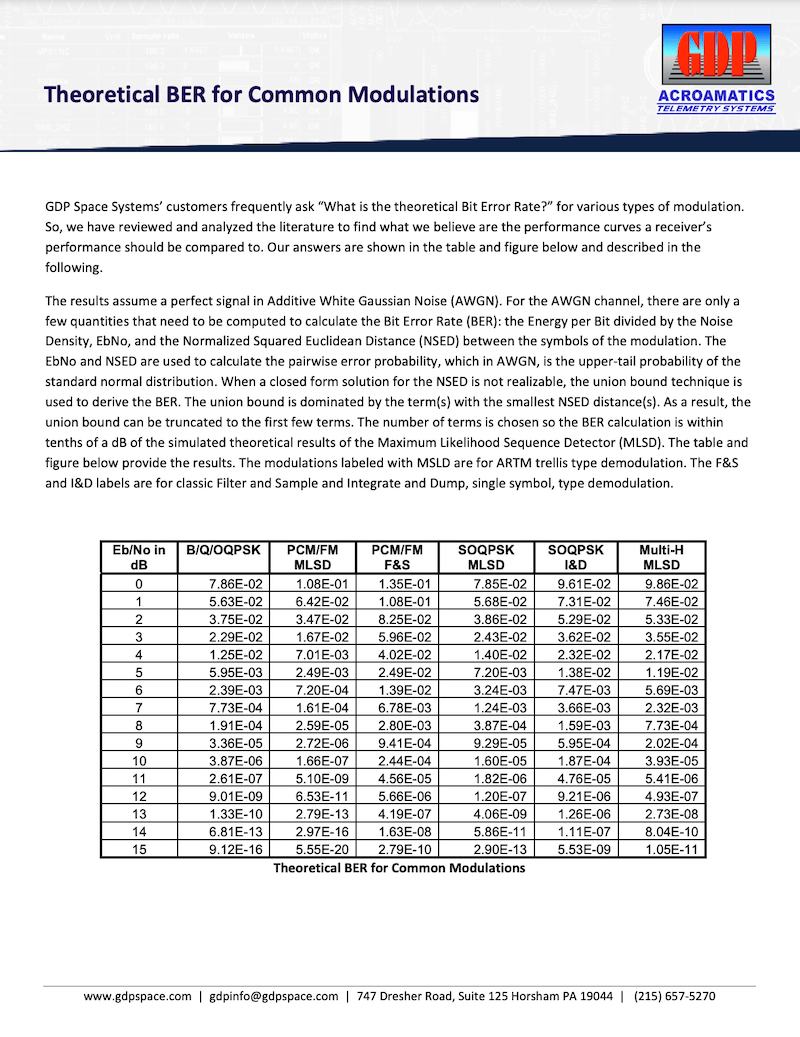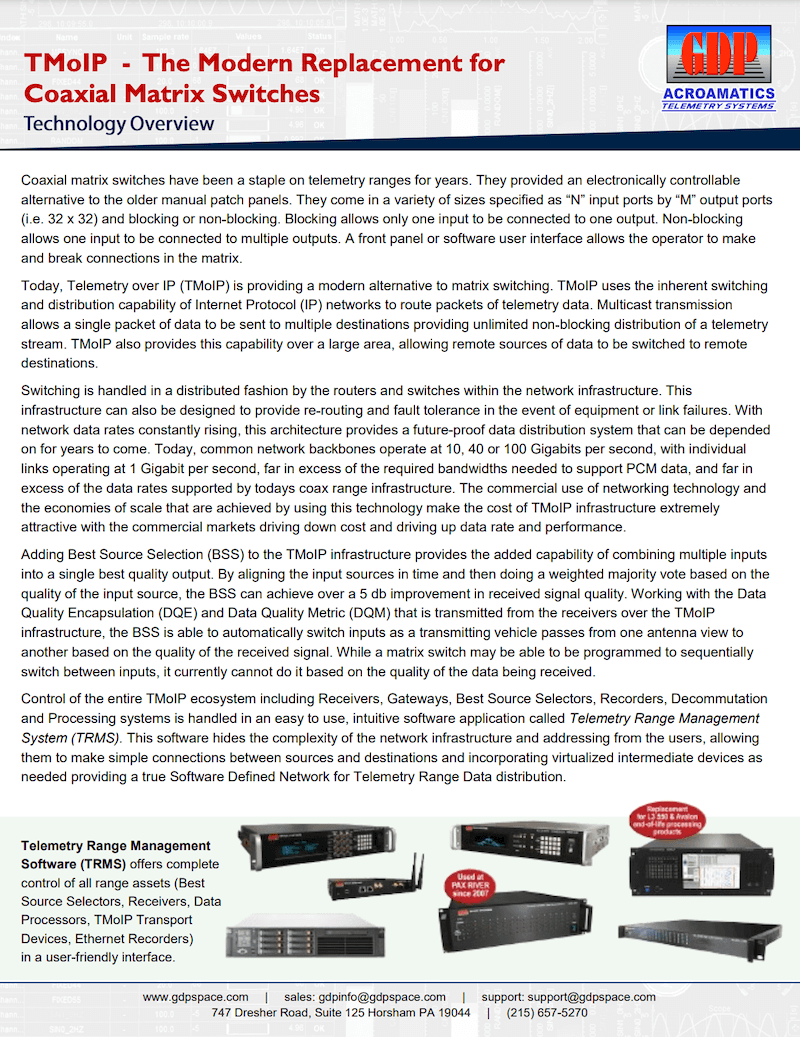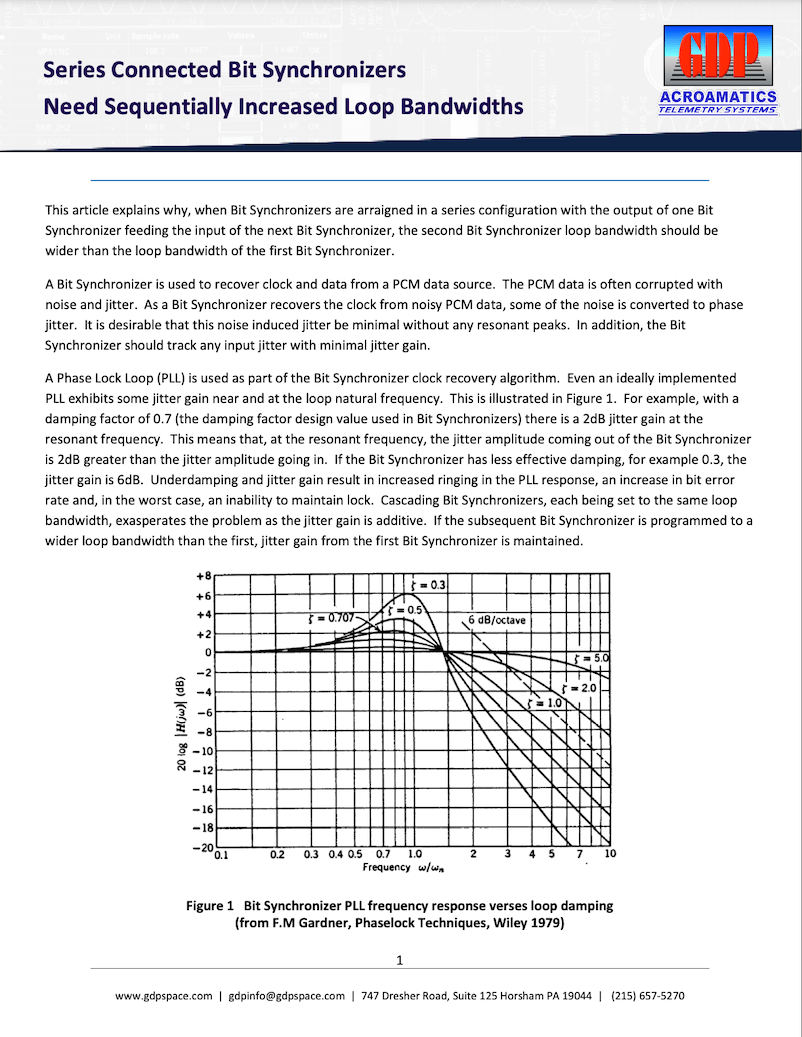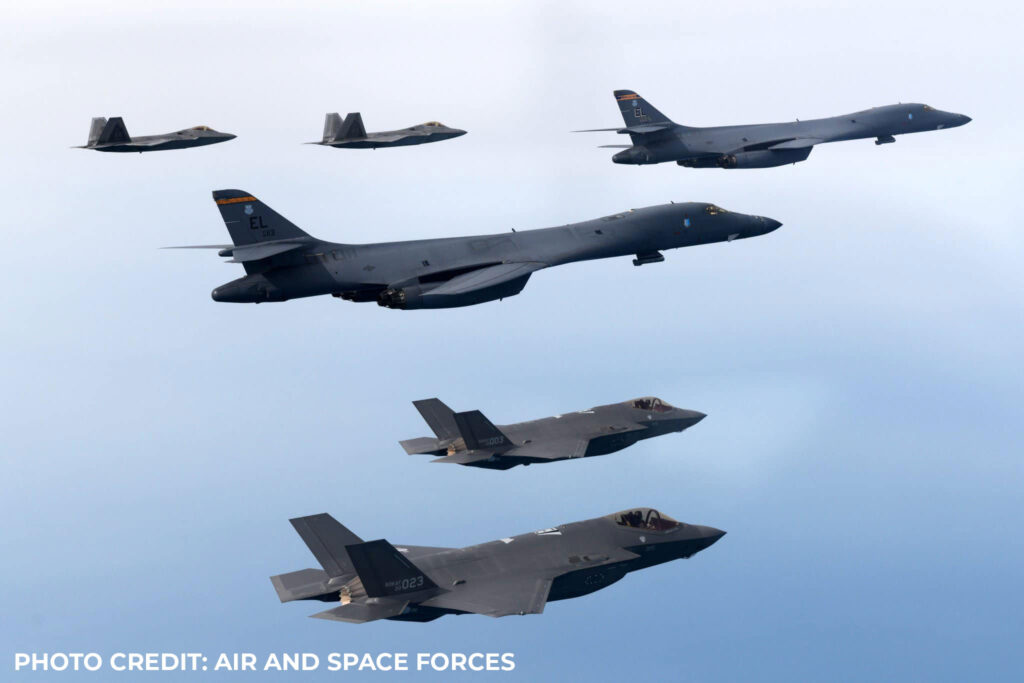Tech Center
We stay up-to-date with the latest trends impacting the telemetry industry. We are excited to share our expertise, provide valuable insight, and help you discover new technology solutions.
Brochures
Capabilities
Products
Tech
Papers
Data Quality Estimation (DQE) by John Carlson
John Carlson, a leading expert in telemetry systems, presents an in-depth analysis of Data Quality Estimation (DQE) methods in his latest whitepaper. This comprehensive study explores the two primary techniques—bit-by-bit signal quality-based and frame-by-frame bit error probability-based estimations—highlighting their strengths, applications, and performance impacts. Carlson’s insights offer valuable guidance for improving link availability and signal integrity, making this a must-read for professionals in telemetry and data collection.
Best Source Selector vs Diversity Combiner
Correlating Best Source Selectors and Diversity Combiners perform similar functions. We are
often asked which technique should be used. For example, should the combined signal or the
uncombined signals, or both, be sent to the best source selector. Or which technique will provide
a higher link availability. This paper attempts to answer these questions and others. The strengths and weaknesses of both techniques are presented and compared. Examples are provided. Suggestions are made for a variety of scenarios based on the pros and cons of the Best Source Selector versus the Diversity Combiner.
BSS vs Combiner BER Comparison
This tech note compares the BER improvement for various combining algorithms. The classic Optimal Ratio Combiner (ORC) is compared to a best source selector picking the Best Source (BS) and a best source selector using straight Majority Vote (MV), GDP Bit-by-Bit (BBB) Weighted Majority Vote (WMV) and RCC/IRIG Frame-by-Frame (FBF) WMV. The comparison is done with 2 signals and with 3 signals, the most common operational scenario, for various combinations of relative signal levels. From a BER perspective the optimal ratio combiner provides the best performance followed by GDP BBB WMV then IRIG FBF WMV. Straight MV is sometimes better than the BS and sometimes worse.
Nyquist & Intermediate Frequency Recording
A Discussion of Wideband Systems Implementation and Comparison of Under- and Over-sampling Techniques
Over the last fifty years, we have undergone incredible changes in the data recording arena. From post-detection, post-decision recording with reel to reel magnetic tape, to using the ubiquitous Chapter-10 digital recorders with many gigabits of bandwidth to record pre-detected data. This paper examines this latest technology implementation … using the Nyquist-Shannon’s Theorem to under-sample high-frequency data and compare the results.
AM vs. AGC Auto-TrackingNetwork Centric E2E Solutions
This white paper examines the differences between AM (Amplitude Modulation) and AGC (Automatic Gain Control) auto-tracking mechanisms in antenna systems. It explores how the AGC’s fast gain adjustment can potentially remove the AM signal required for auto-tracking, while also introducing an AC component in the AGC signal. The paper discusses the implications of these mechanisms and their impact on accurate target tracking.
Network Centric E2E Solutions
Take a dive into The Delta Telemetry Systems’ product capabilities, our network centric E2E solutions, how TRMS works, and what TRMS can do for you, followed by The Delta Difference.
Adaptive Equalizer Performance Analysis
An Adaptive Equalizer (AEQ) is a filter that automatically adjusts itself to mitigate time varying distortion in a received signal. A properly designed AEQ can be used to combat the effects of multipath distortion and fading on a telemetry signal.
An Overview of Telemetry over Internet Protocol (TMOIP)
As telemetry ground stations are finally making the move toward network centric architectures, it is worth considering the lessons learned over the previous 10 years of designing, installing, troubleshooting and optimizing telemetry data distribution over IP networks. This paper discusses some of the architectural decisions to be made and some of the pitfalls to avoid in developing the next generation of networked telemetry ground stations. Critical issues such as latency, efficiency, data loss and Quality of Service are addressed, as well as techniques for troubleshooting these problems.
Real World Experiences with Network Centric Telemetry Systems
As telemetry ground stations are finally making the move toward network centric architectures, it is worth considering the lessons learned over the previous 10 years of designing, installing, troubleshooting and optimizing telemetry data distribution over IP networks. This paper discusses some of the architectural decisions to be made and some of the pitfalls to avoid in developing the next generation of networked telemetry ground stations. Critical issues such as latency, efficiency, data loss and Quality of Service are addressed, as well as techniques for troubleshooting these problems.
Theoretical BER for Common Modulations
GDP Space Systems’ customers frequently ask “What is the theoretical Bit Error Rate?” for various types of modulation. So, we have reviewed and analyzed the literature to find what we believe are the performance curves a telemetry receiver’s performance should be compared to. Our answers are shown in the table and figure below and described in the following document.
Network Centric Flight Test Architectures
The easier management and control of large amounts of data can be achieved with the modern Ethernet over IP and the right software from GDP Space Systems, and sister companies.
High-Level Graphical User Interface to Streamline Mission Management of Dynamically Growing Data Transport Systems
As data transport systems become exponentially larger and more complex, the need to simplify the level of user involvement in establishing the intercommunication pathways becomes increasingly vital to streamlined, effective mission management. The proliferation of open-architecture, modular approaches to data transport and multiplexing systems shows the need for a unified, high-level control scheme that helps to flatten the users’ learning curve for increasingly sophisticated, expanding systems. Implementing a control package with the functionality described in this paper will improve the user experience by eliminating the need for low level hardware management, minimizing system network footprint and unifying this functionality for a diverse hardware package.
An Engineer’s Guide To TMoIP
As telemetry transport systems move inexorably closer to a unified telemetry-over-IP approach, the operators and engineers who have traditionally deferred to a separate communications group can benefit from a more comprehensive understanding of the intricacies of the transport medium and protocol. Ethernet, and more specifically IP network hardware, has gained increased robustness, as well as much of the reliability enhancing functionality of more venerable transport solutions, but with these increasingly integrated feature sets comes an emphasized demand on the telemetry systems operator to be able to configure the telemetry transport network devices in more dynamic environments. This paper will seek to serve as a handbook for the telemetry community, guiding discussions of the strengths, weaknesses, legacy, and future outlook of this transport methodology both within and without the groups involved in most range telemetry transport environments.
Series Connected Bit Synchronizers Need Sequentially Increased Loop Bandwidths
This article explains why, when Bit Synchronizers are arraigned in a series configuration with the output of one Bit Synchronizer feeding the input of the next Bit Synchronizer, the second Bit Synchronizer loop bandwidth should be wider than the loop bandwidth of the first Bit Synchronizer. A Bit Synchronizer is used to recover clock and data from a PCM data source. The PCM data is often corrupted with noise and jitter. As a Bit Synchronizer recovers the clock from noisy PCM data, some of the noise is converted to phase jitter. It is desirable that this noise induced jitter be minimal without any resonant peaks. In addition, the Bit Synchronizer should track any input jitter with minimal jitter gain.
Specifying and Evaluating PCM Bit Synchronizers
Topics include bit error rate performance in non-white Gaussian noise, acquisition and sync maintenance, and the effects of jitter, transition density and transition gaps. The merits of multiple and/or adaptive loop bandwidths are discussed.
Videos
WSI | What Makes Our Telemetry Recorders Advanced
5 The GDP Difference
GDP Space Systems Adaptive Equalization Overview
Acroamatic’s Telemetry Data Processing & Simulation Systems
Training
Our customers are among the smartest people in the industry, literally Rocket Scientists. But the devil is in the details, and our training courses help you to be an expert in the details.
Whether it is hands-on training for our individual products, or in-depth training on current industry trends, we are here to help you. Our training courses are taught by industry’s leading experts with practical knowledge in their field.
Courses can be custom tailored to meet specific requirements and are offered at one of our company offices, or the client’s location of choice*. Courses offered include must are not limited to:
- TDP Software Configuration: Bit Sync, Frame Sync, Decom Bit Synchronizer, EU Processing, and Best Source Selector Operation
- Installation, Operation, and Understanding of Acroamatics’ Telemetry Data Processing Equipment
- Telemetry Receiver Technology Training
- Overview of Video and Video Compression
- Telemetry over IP Tutorial
- Basic Overview of Telemetry
- TDP Intro & Advanced Product Training
*Course location depends on travel distance and size of the group.*
Latest News
New Whitepaper Release: Data Quality Estimation (DQE): The Two Main Techniques and Their Strengths and Weaknesses
By John Carlson John Carlson, GDP Cheif Engineer & a highly regarded expert in telemetry systems and signal processing, presented his latest work, “Data Quality…
Read MoreSupporting F-16s & F-35s in South Korea
Delta Information Systems is thrilled to support the critical operations involving the F-16s and F-35s as highlighted in the recent B-1 Bomber exercise over South…
Read MoreClassifying All The (Right) Things
When performing missions in Red, it’s crucial to limit where the classified data can go. Using a telemetry antenna system should not involve classified information…
Read More
